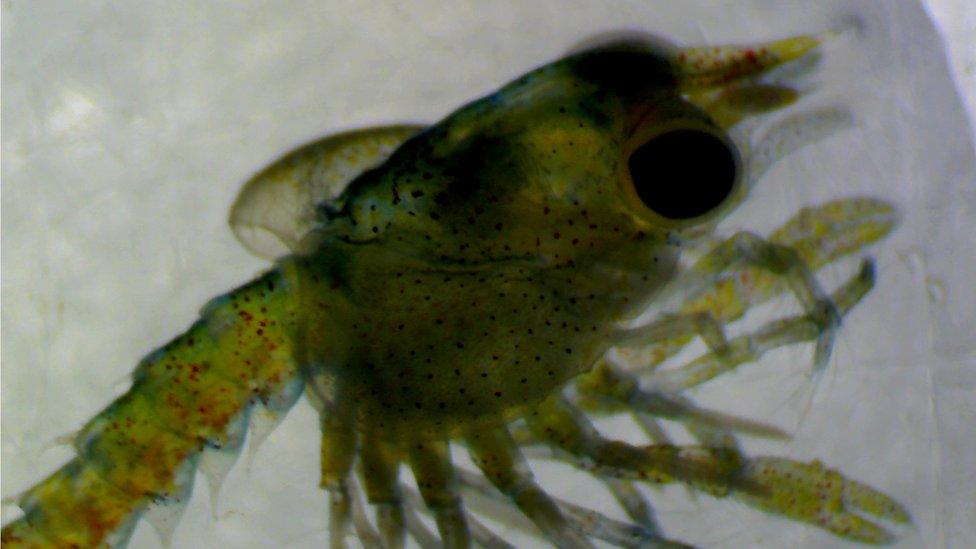Lobsters' deformities linked to subsea cables
- Published

Deformities included a curled, puffy carapace - or outer shell
Lobsters which hatch near subsea electricity cables risk developing life-limiting deformities, researchers have said.
Scientists from Heriot-Watt University at St Abbs exposed lobster larvae to electromagnetism in the lab to see how it affected their development.
They said exposed lobsters were three times more likely to develop abnormalities around the tail and eyes.
Experts said it meant cables must be buried on the sea bed.
Many more cables will have to be laid in the coming years to service the huge number of offshore wind farms which will be constructed in Scotland's waters.
A healthy lobster larva
Crown Estate Scotland has leased the rights to develop 17 new wind farms over the next decade or so.
The lab tests were carried out on species of crab and lobster, although it was the European lobster which was most affected.
Dr Alastair Lyndon, a marine biologist at Heriot-Watt University, said: "We put them through a vertical swimming test to check they could get to the surface to find food. The exposed lobsters were almost three times more likely to fail the test, by not reaching the top of the chamber, than the unexposed ones.
"The most common deformities we found included bent and reduced tail sections, which could account for the swimming test results. In addition, some had disrupted eye development or had puffy and swollen bodies."
About 4,000 lobster and crab eggs were used in the research.
The marine scientists said more research was needed to establish the levels of electromagnetism which can be tolerated.
Eye defects are another of the deformities
European lobster is not an endangered species but experts said it had significant commercial value which was putting it under pressure.
The industry body Scottish Renewables said cables were routinely buried in the waters around Scotland's coast.
But it can be expensive and makes the cables difficult to maintain.
Moran Watson, director of policy, said: "Offshore wind developers already bury all cables where possible, often as a condition of their licence, so we welcome this new research as a contribution to those mitigation efforts.
"It is also important to recognise that offshore renewable energy projects provide one of the most powerful tools we have in the fight against one of most widespread threats to the health of the marine environment - climate change."